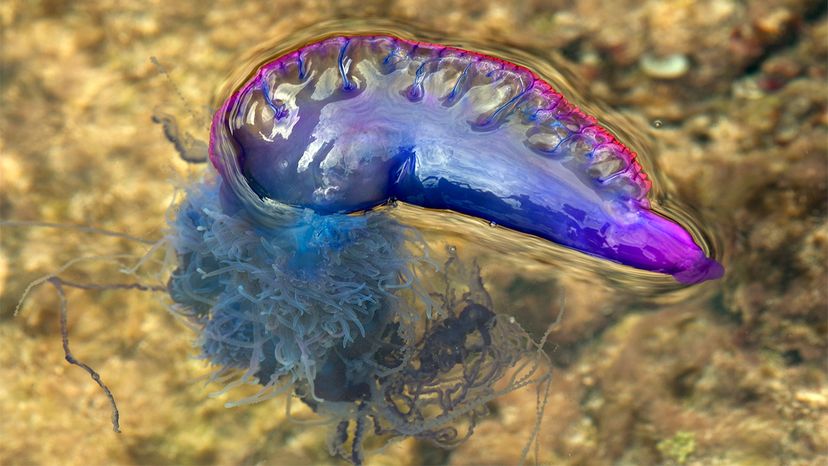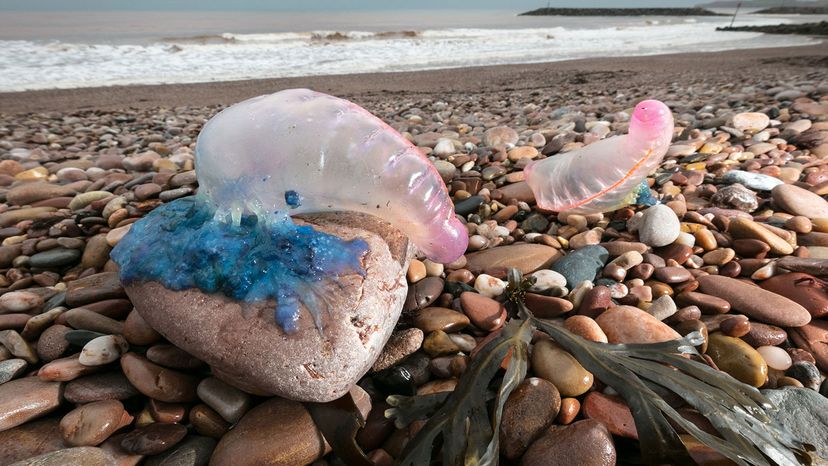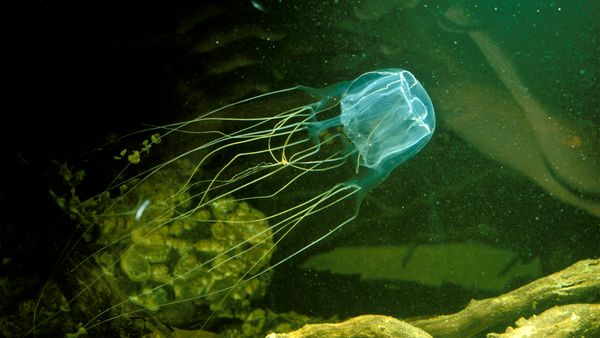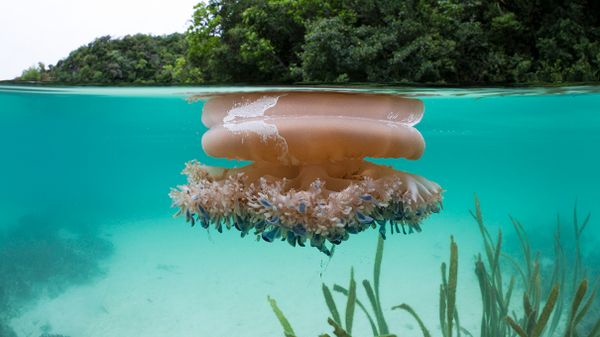"In general, the [Portuguese man-of-war] is comprised of several types of zooids with specific functions," says Paul Bologna of Montclair State University in Montclair, New Jersey, in an email. As he puts it, "Hundreds to thousands of individual zooids might comprise the whole colony," depending on the size of the man-of-war at hand.
Some of them, the "gastrozooids," break down food for the colony. That food is captured in the first place by the grasping "dactylozooids," also known as "tentacular palpons." Another important player is the "pneumatophore," a gas-filled flotation bladder.
And let's not forget about the procreation specialists.
Human beings might not have too many things in common with Portuguese men-of-war. Yet they, like us, reproduce sexually. Every colony produces sperm or egg cells — but not both.
"During reproductive seasons, individuals shed their gametes [sex cells] into the water where fertilization of the eggs occurs," Bologna says. (Note that in this context, the word "individual" refers to an entire colony. We're not talking about lone zooids here.)
"These cells begin to divide and develop in the water column," Bologna continues. "As the individual grows, new zooids (clones within the colony) are generated. As the early colony develops, the pneumatophore expands and fills with air, which brings it to the surface where final development and growth occurs."



